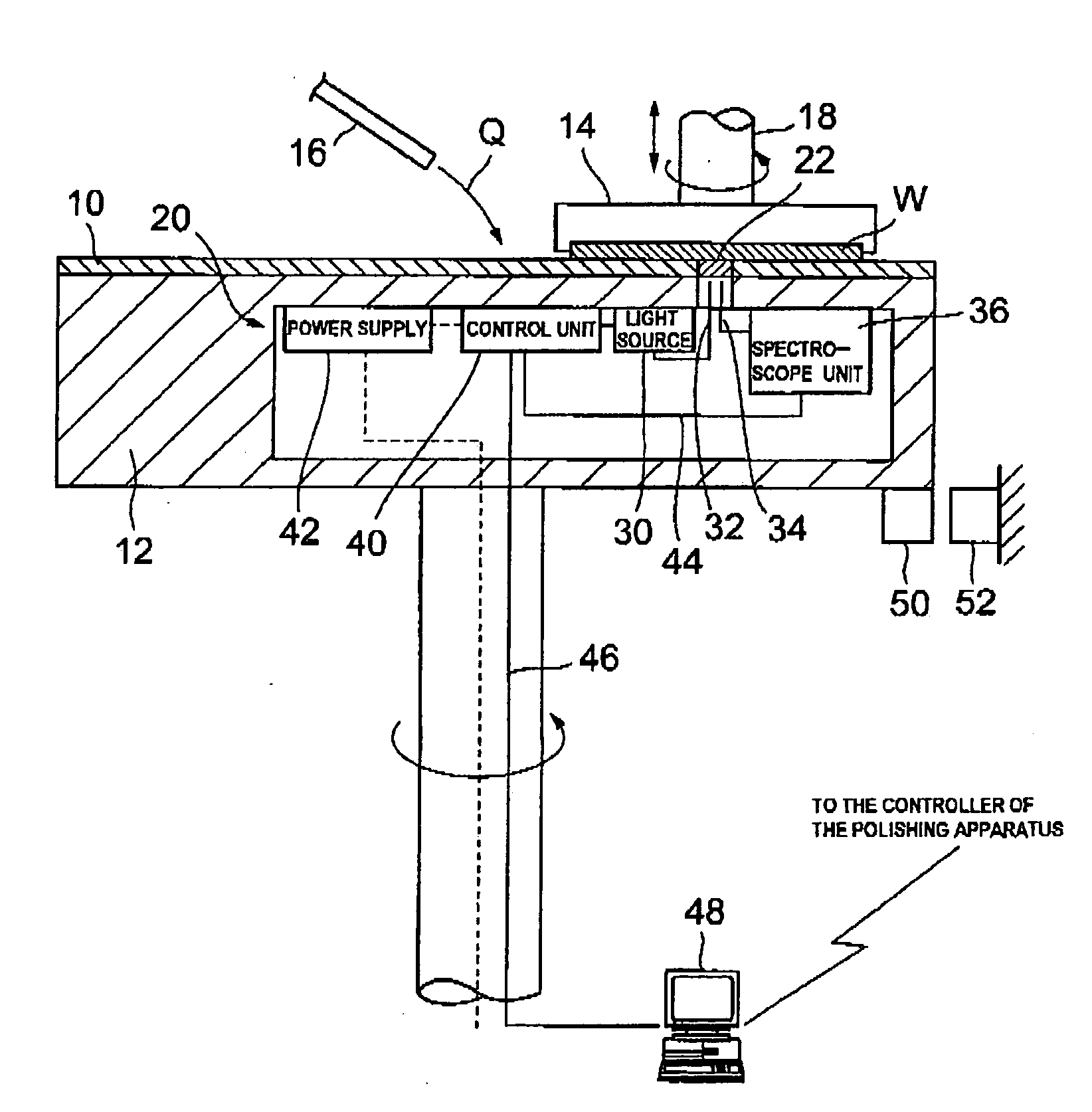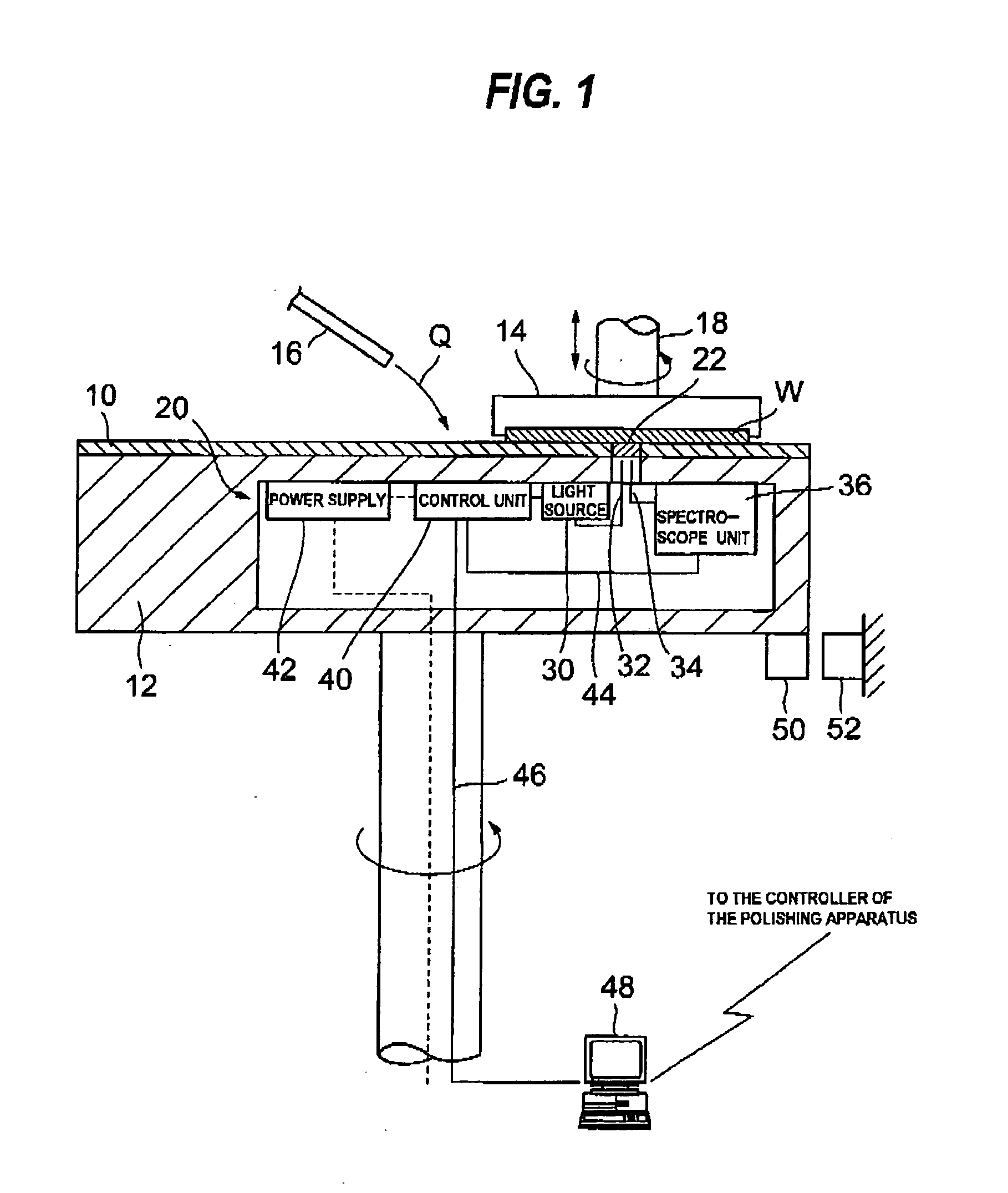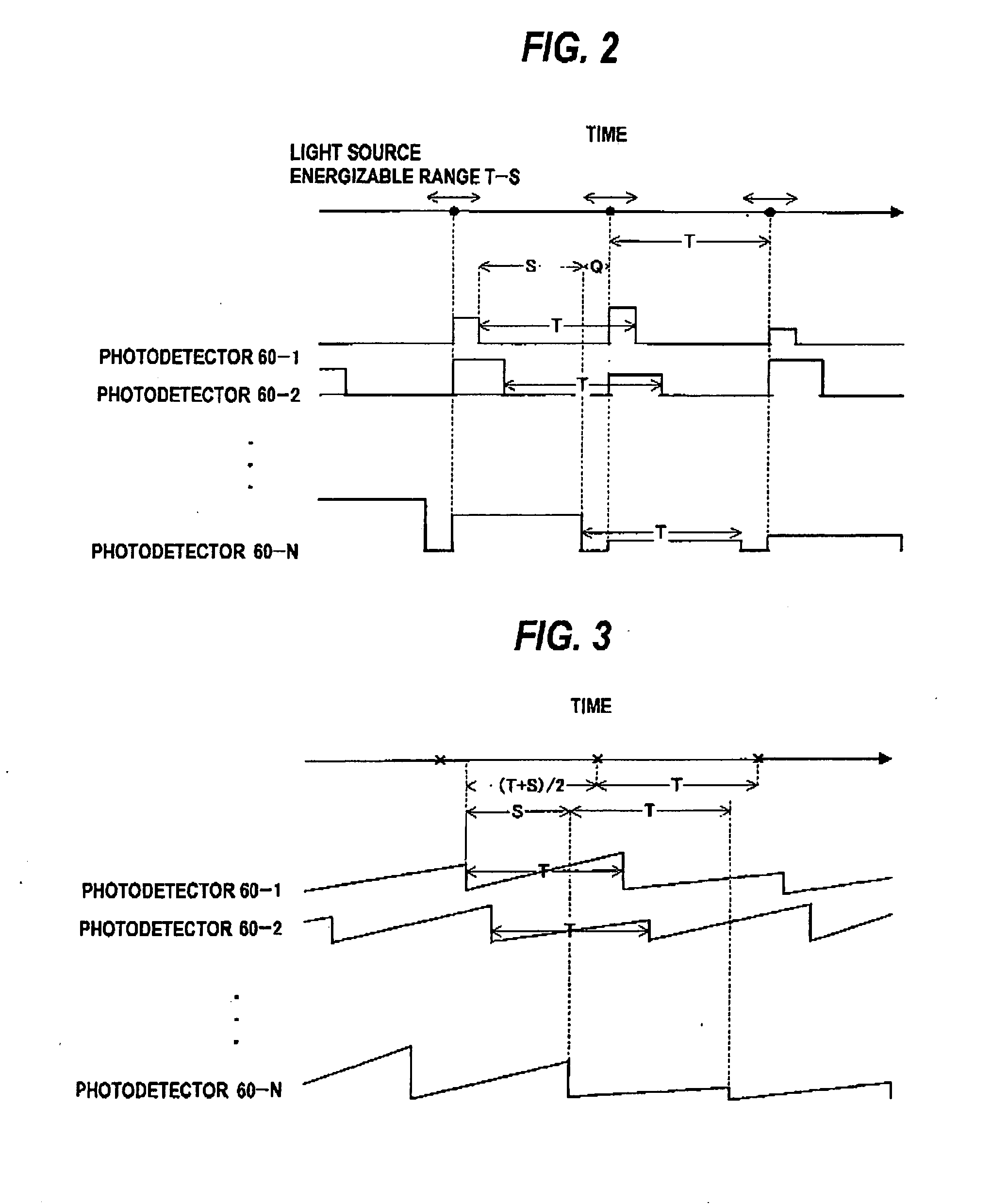Processing end point detection method, polishing method,and polishing apparatus
a technology of polishing end point and detection method, which is applied in the direction of semiconductor/solid-state device testing/measurement, lapping machines, instruments, etc., can solve the problems of large loss, circuits are not separated well, and circuit resistance can increase, so as to achieve accurate polishing end point detection, suppress the influence of noise, and average film thickness
- Summary
- Abstract
- Description
- Claims
- Application Information
AI Technical Summary
Benefits of technology
Problems solved by technology
Method used
Image
Examples
Embodiment Construction
[0072]Embodiments of the present invention will be described in detail below with reference to the drawings.
[0073]FIG. 1 is a schematic view showing an overall arrangement of a polishing apparatus capable of performing a method of detecting a polishing end point according to an embodiment of the present invention. As shown in FIG. 1, the polishing apparatus has a polishing table 12 with a polishing pad 10 attached to an upper surface thereof, and a top ring 14 for holding a substrate W, which is a workpiece (object to be polished) and pressing the substrate W against an upper surface of the polishing pad 10. The upper surface of the polishing pad 10 serves as a polishing surface providing a sliding contact with the substrate W. An upper surface of a fixed abrasive plate containing fine abrasive particles (made of CeO2 or the like) fixed by a binder, such as resin, may be used as a polishing surface.
[0074]The polishing table 12 is coupled to a motor (not shown) disposed therebelow, a...
PUM
| Property | Measurement | Unit |
|---|---|---|
| size | aaaaa | aaaaa |
| reflection intensities | aaaaa | aaaaa |
| wavelengths | aaaaa | aaaaa |
Abstract
Description
Claims
Application Information
 Login to View More
Login to View More - R&D
- Intellectual Property
- Life Sciences
- Materials
- Tech Scout
- Unparalleled Data Quality
- Higher Quality Content
- 60% Fewer Hallucinations
Browse by: Latest US Patents, China's latest patents, Technical Efficacy Thesaurus, Application Domain, Technology Topic, Popular Technical Reports.
© 2025 PatSnap. All rights reserved.Legal|Privacy policy|Modern Slavery Act Transparency Statement|Sitemap|About US| Contact US: help@patsnap.com



